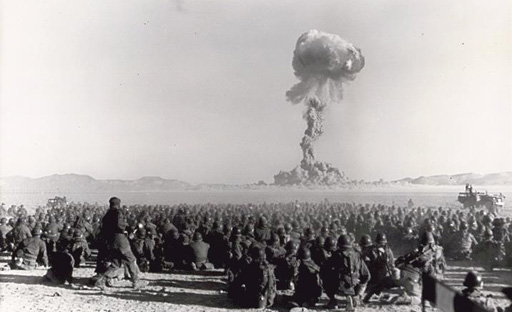
September 26th is the International Day for the Total Elimination of Nuclear Weapons.
In the words of United Nations Secretary-General Ban Ki-Moon, “The consequences of any further use of nuclear weapons, whether intentional or by mistake, would be horrific. When it comes to our common objective of nuclear disarmament, we must not delay – we must act now.”
Achieving global nuclear disarmament is one of the oldest goals of the United Nations. It was the subject of the General Assembly’s first resolution 70 years ago, in 1946. It has been on the General Assembly’s agenda along with general and complete disarmament ever since 1959. It has been a prominent theme of review conferences held at the UN since 1975 of states which are parties to the Nuclear Non-Proliferation Treaty. It was identified as a priority goal of the General Assembly’s first Special Session on disarmament in 1978, which attached a special priority to nuclear disarmament. And it has been supported by every United Nations Secretary-General.
Yet today, some 16,000 nuclear weapons remain, stored at sites in 14 countries. Countries possessing such weapons, including the United States, have well funded, long-range plans to modernize their nuclear arsenals. More than half of the world’s population still lives in countries that either have such weapons or are members of nuclear alliances. As of 2015, not one nuclear weapon has been physically destroyed pursuant to a treaty, bilateral or multilateral, and no nuclear disarmament negotiations are currently underway.
Nuclear weapons have been forbidden by agreements between countries. Many nations have been declared Nuclear-Weapon-Free Zones, areas where nuclear weapons production and deployment are prohibited, through the use of treaties. The Treaty of Tlatelolco (1967) prohibited any production or deployment of nuclear weapons in Latin America and the Caribbean, and the Treaty of Pelindaba (1964) prohibits nuclear weapons in many African countries. As recently as 2006 a Central Asian Nuclear Weapon Free Zone was established among the former Soviet republics of Central Asia prohibiting nuclear weapons.
Meanwhile, the doctrine of nuclear deterrence persists as an element in the security policies of all possessor states and their nuclear allies. This is so despite growing concerns worldwide over the catastrophic humanitarian consequences of the use of even a single nuclear weapon, let alone a regional or global nuclear war. In the U.S. presidential campaign now underway, the GOP candidate has casually expressed interest in deploying nuclear weapons against offending nations and peoples, and encouraged other nations to acquire them, to the dismay of every thoughtful person in the world.
These facts provide the foundation for the General Assembly’s designation of September 26th as the International Day for the Total Elimination of Nuclear Weapons. This occasion provides an opportunity for the world community to reaffirm its commitment to global nuclear disarmament as a high priority. It intends to educate the public and their leaders about the real benefits of eliminating such weapons, and the social and economic costs of perpetuating them. Commemorating this Day at the United Nations is especially important, given its universal membership and its long experience in grappling with nuclear disarmament issues.
High on the list of global concerns is the urgency of addressing one of humanity’s greatest challenges, achieving the peace and security of a world without nuclear weapons.
Source: United Nations, Wikipedia.
Photo: Wikimedia (CC)






